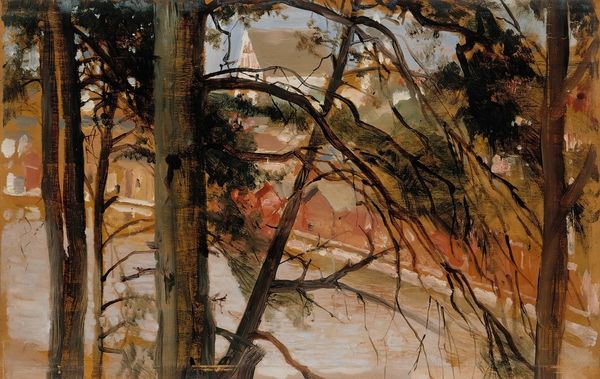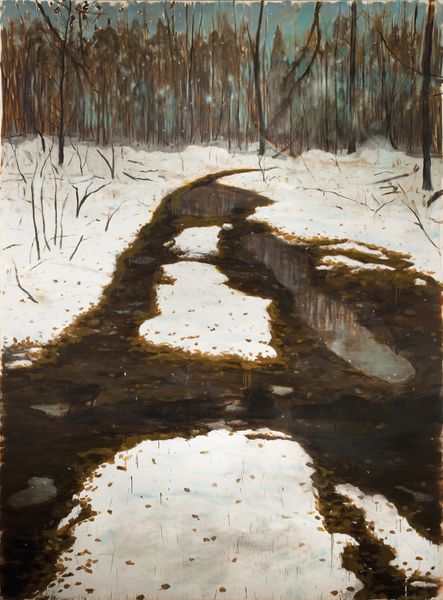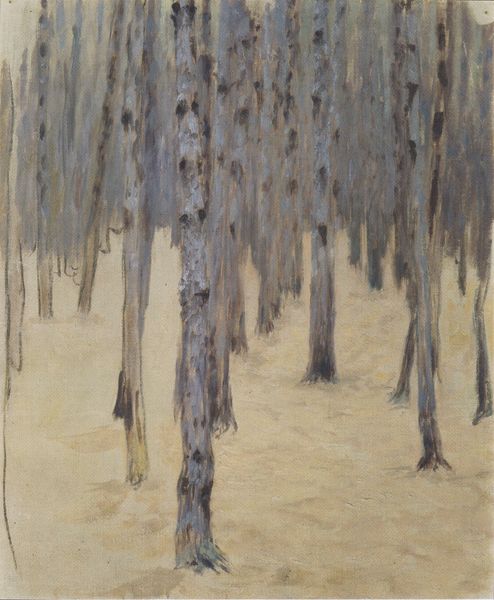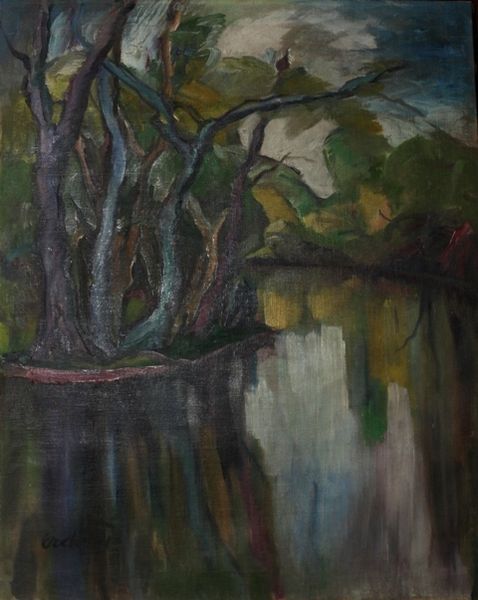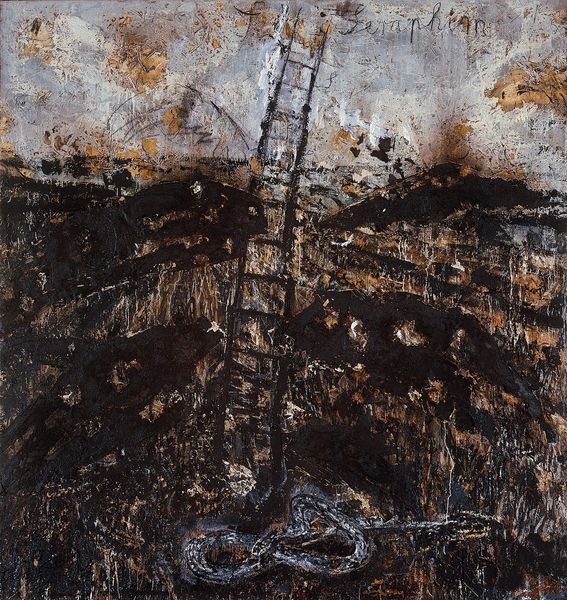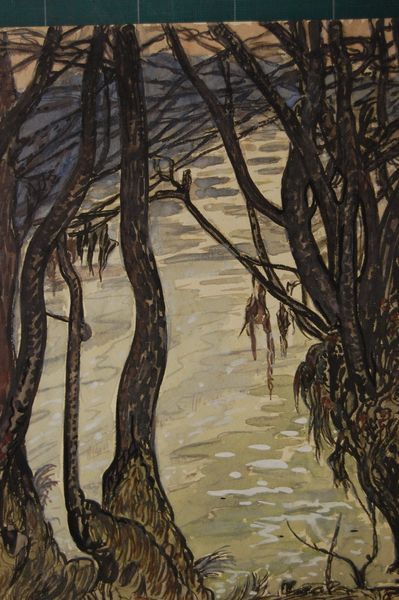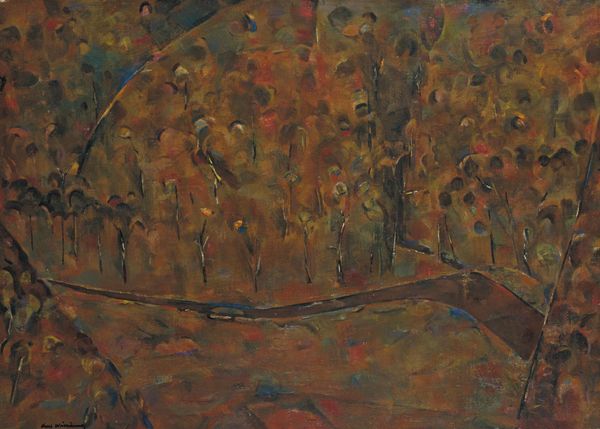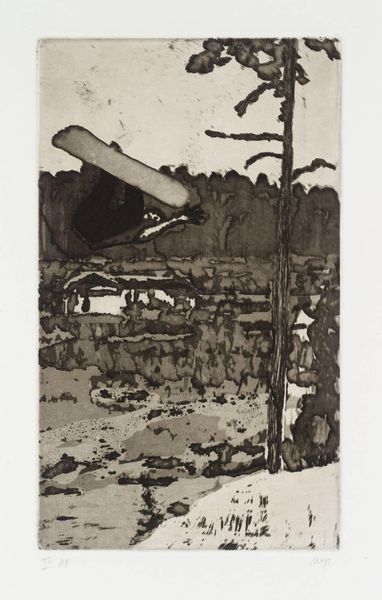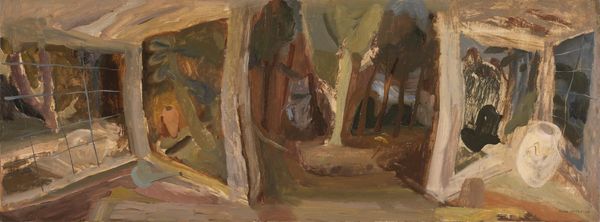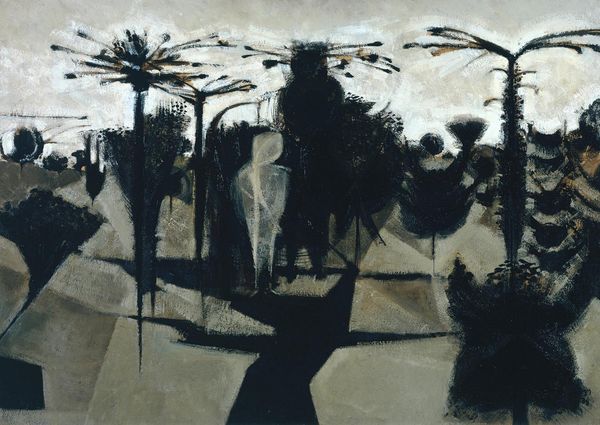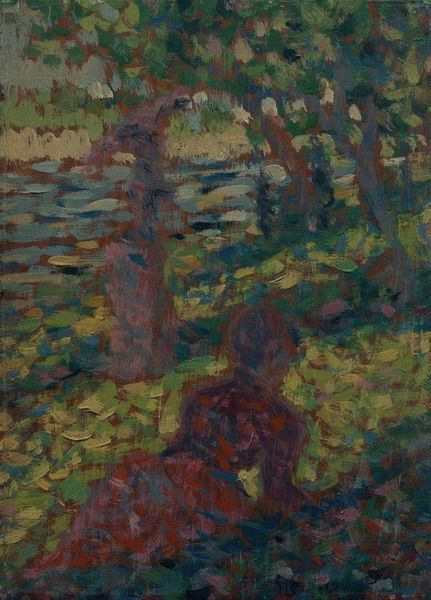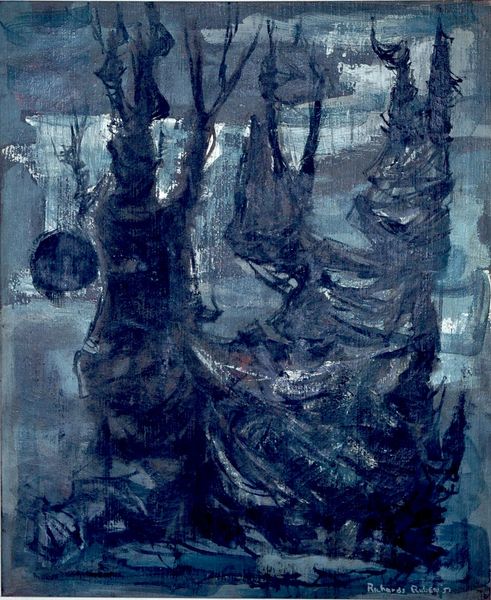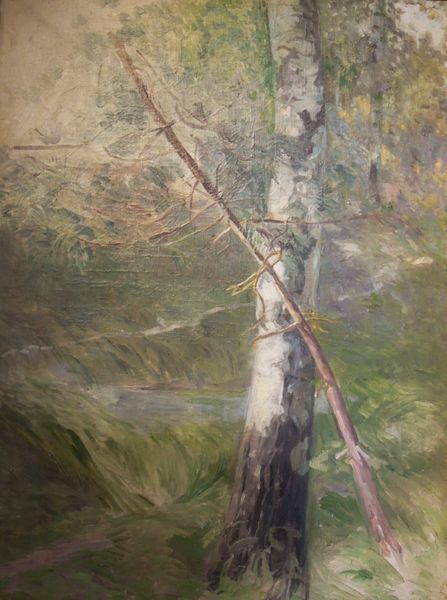
Copyright: Sidney Nolan,Fair Use
Editor: Okay, so this painting is called "Women and Billabong," created in 1957 by Sidney Nolan, using oil paint. It's pretty murky overall... the palette is mostly browns and dark colors. It almost feels like looking at a dream. What do you see in this piece? Art Historian: I see layers of meaning embedded in the seemingly simple composition. The billabong, a stillwater oasis, often appears in Indigenous Australian art, symbolizing life and sustenance but here, juxtaposed with the nude figures, we encounter a different dialogue. Notice how the reflections distort reality; water acts as a mirror but also as a divider. It invites a pondering on identity, especially gender roles within the harsh landscapes. Is it about escape, a yearning for a lost Arcadia, or a commentary on environmental impact and forgotten feminine strength? Editor: Feminine strength? I didn't catch that on my own! How does that translate from what's in the image? Art Historian: Look closely; despite their seeming vulnerability, the women stand within the landscape, their image interlinked with the reflections. They seem untouched by their surroundings. What’s particularly arresting is the ambiguous presence of the horizontal beam cutting across the canvas; this barrier emphasizes a forced estrangement yet a shared symbolic place of the individual and their cultural environment. The billabong landscape almost appears to accept them, though we sense this may not last. What are your thoughts on the cultural weight held within abstract Australian landscape? Editor: Well, I didn’t realize there was so much depth. Seeing it through your perspective makes me think about how much context informs a piece, especially concerning location. Art Historian: Absolutely, we filter everything through our subjective lenses. Editor: Thank you; I'm already seeing so much more! Art Historian: And that's the power of art—to constantly offer fresh perspectives and interpretations across time and contexts.
Comments
No comments
Be the first to comment and join the conversation on the ultimate creative platform.
